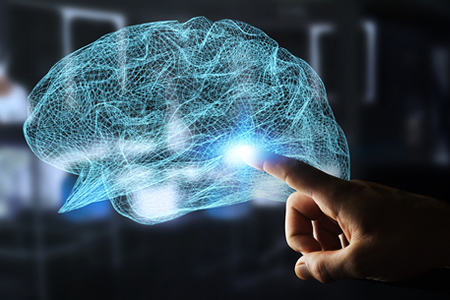A study led by Dennis Drayna, Ph.D of the National Institute on Deafness and Other Communication Disorders (NIDCD) has provided insights into the neurological deficits associated with stuttering and the types of brain cells involved.
A stutter is the involuntary repetition of sounds or pauses during speech that disrupts the natural flow of speech. Repetition is most common on initial consonants and some individuals are unable to produce certain sounds. Individuals with a stutter – or stammer – know exactly what they want to say. They just have problem speaking the words. There are several suspected causes of stuttering, including brain injury, emotional trauma, or genetic disorders.
The condition is most common in adolescents, who usually grow out of it, but for around 25% of children it is a life-long affliction. Around 1% of individuals in the United States have experienced a stutter at some point in their lives.
The researchers used a mouse model of stuttering – mice that had been engineered to have a genetic mutation that had previously been linked with stuttering in humans – to investigate molecular and cellular changes associated with stuttering.
The researchers analyzed the brains of the mice and noted a loss of astrocytes – star-shaped glial cells that are part of the central nervous system – in certain areas of the brain, in particular, the corpus callosum. The corpus callosum connects both hemispheres of the brain and is involved in integrating motor, sensory, and cognitive performances from one side of the brain to the same region on the other. The research correlates with some studies in humans that showed structural and functional problems in patients with stutters in the same areas of the brain as the mouse study.
The research adds to the growing weight of evidence that stuttering is often due to a brain disorder caused by underlying genetic, molecular, and cellular changes. The identification of the areas of the brain where changes have occurred, together with the types of cells involved, opens up new areas for research and potential opportunities for novel interventions to cure stuttering.
Further information can be found in the paper – Human GNPTAB stuttering mutations engineered into mice cause vocalization deficits and astrocyte pathology in the corpus callosum – which was recently published in the journal Proceedings of the National Academy of Sciences. DOI: 10.1073/pnas.1901480116
